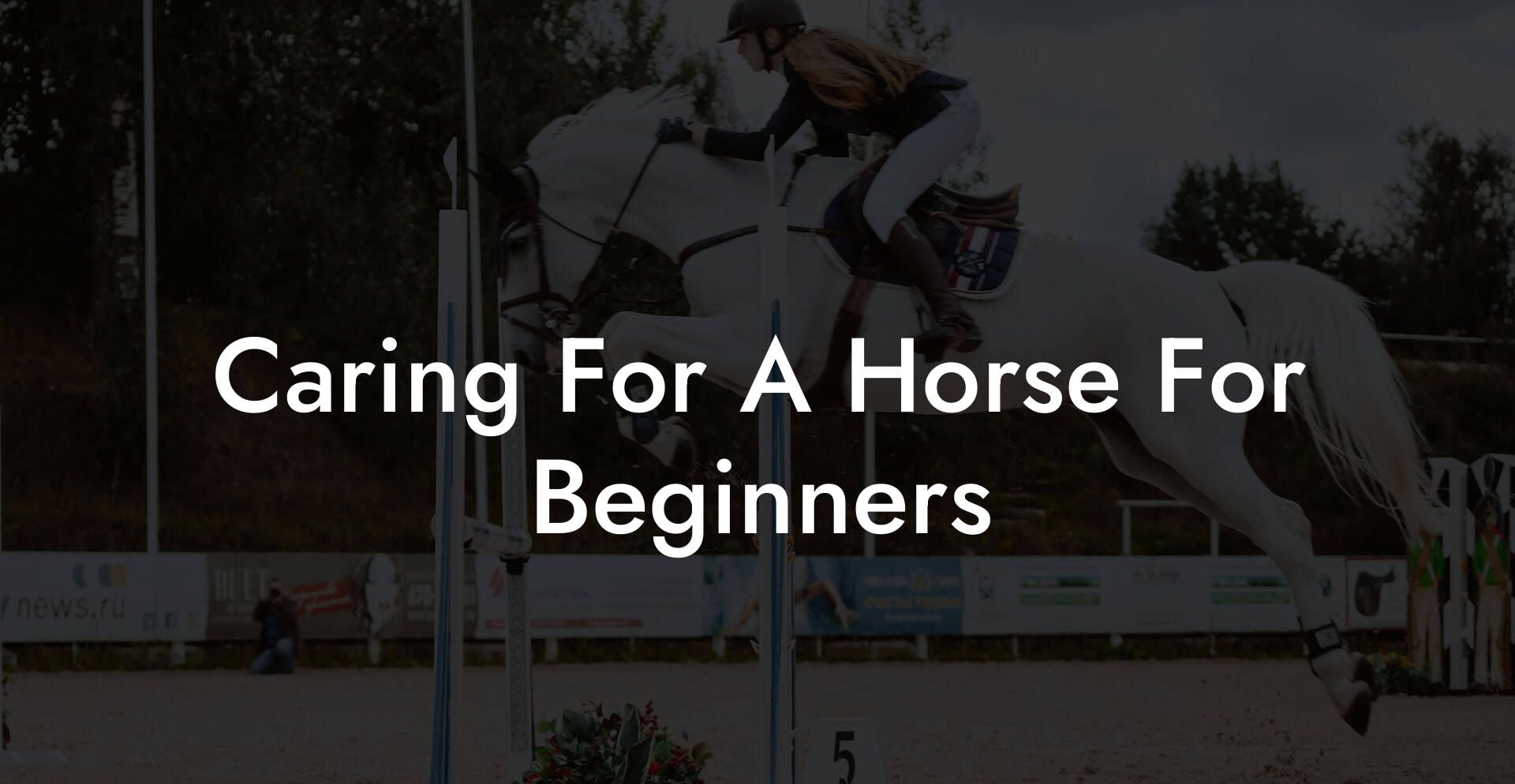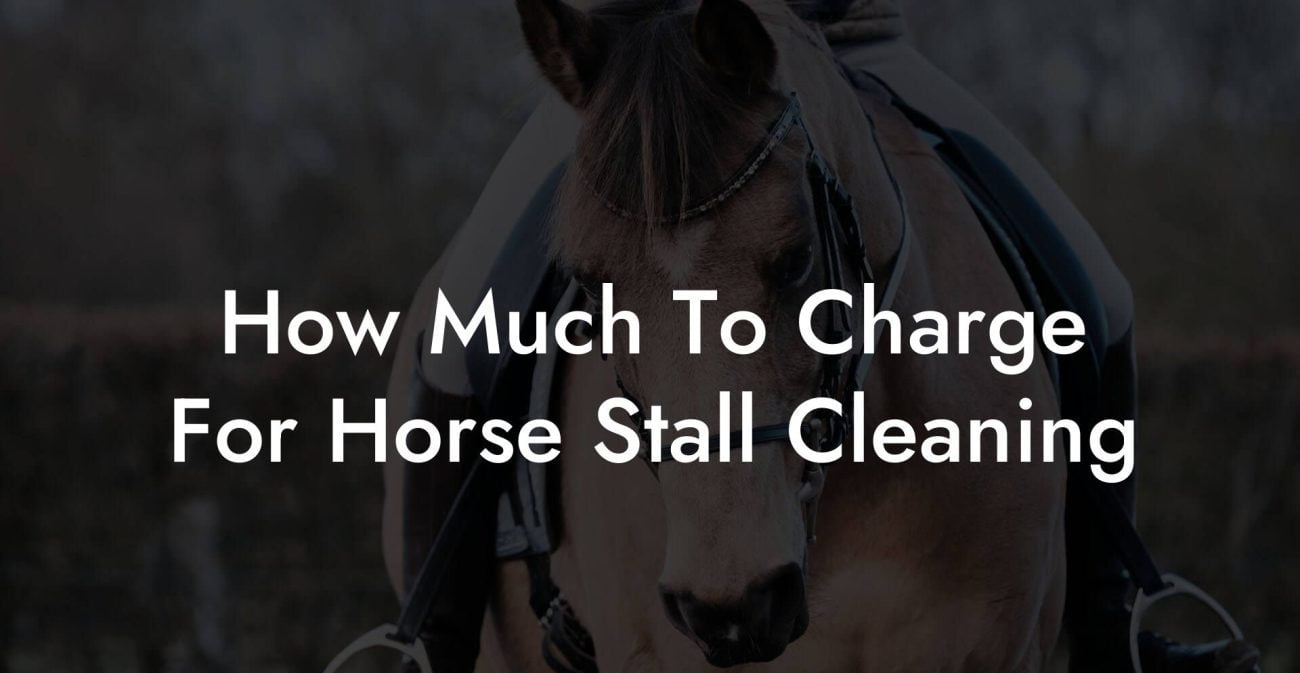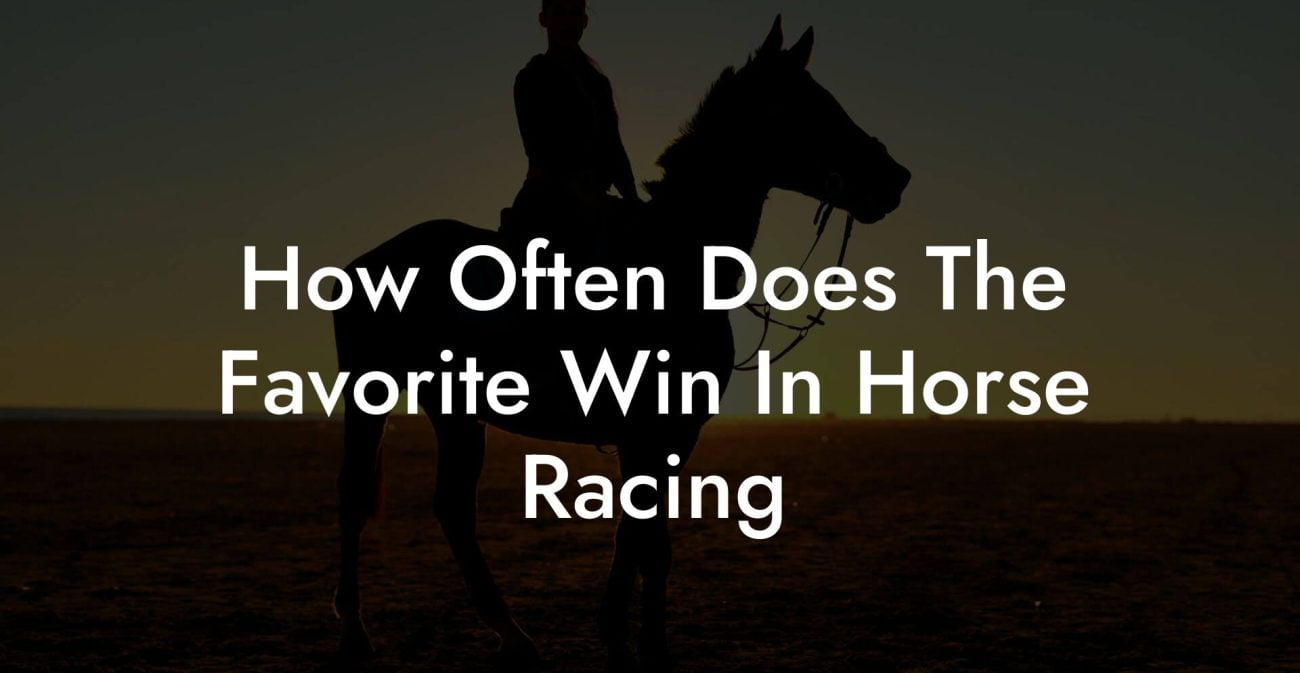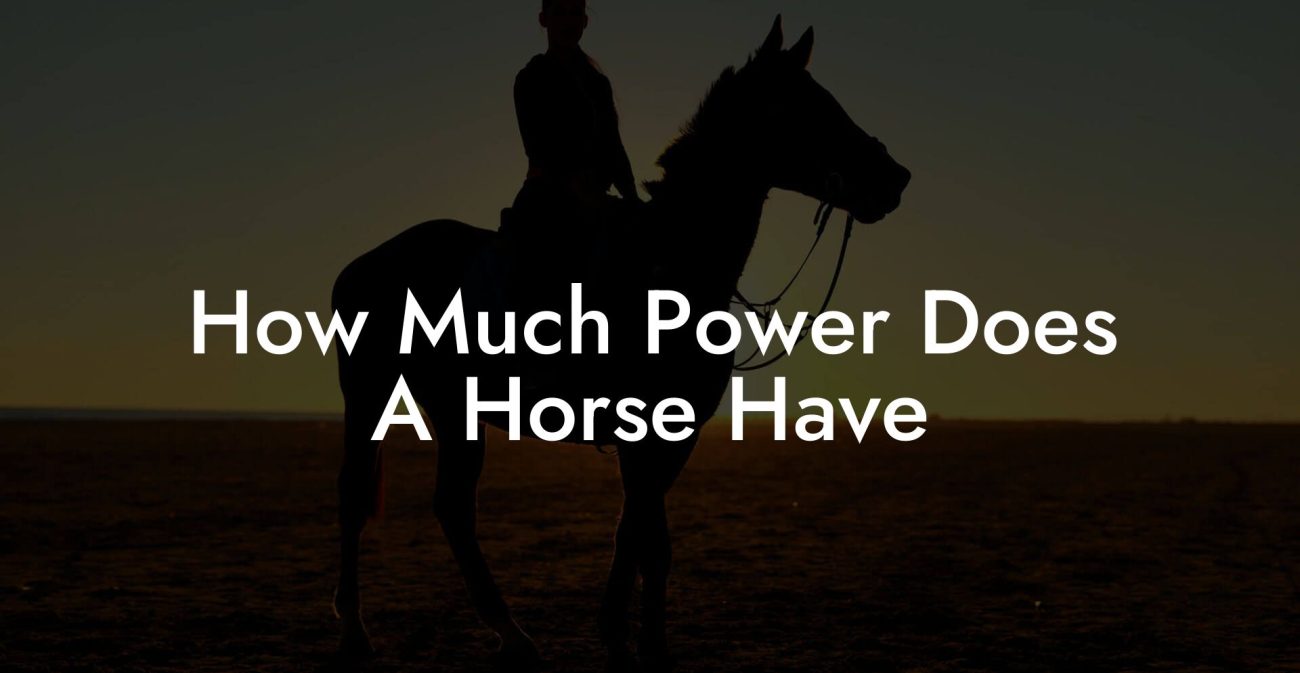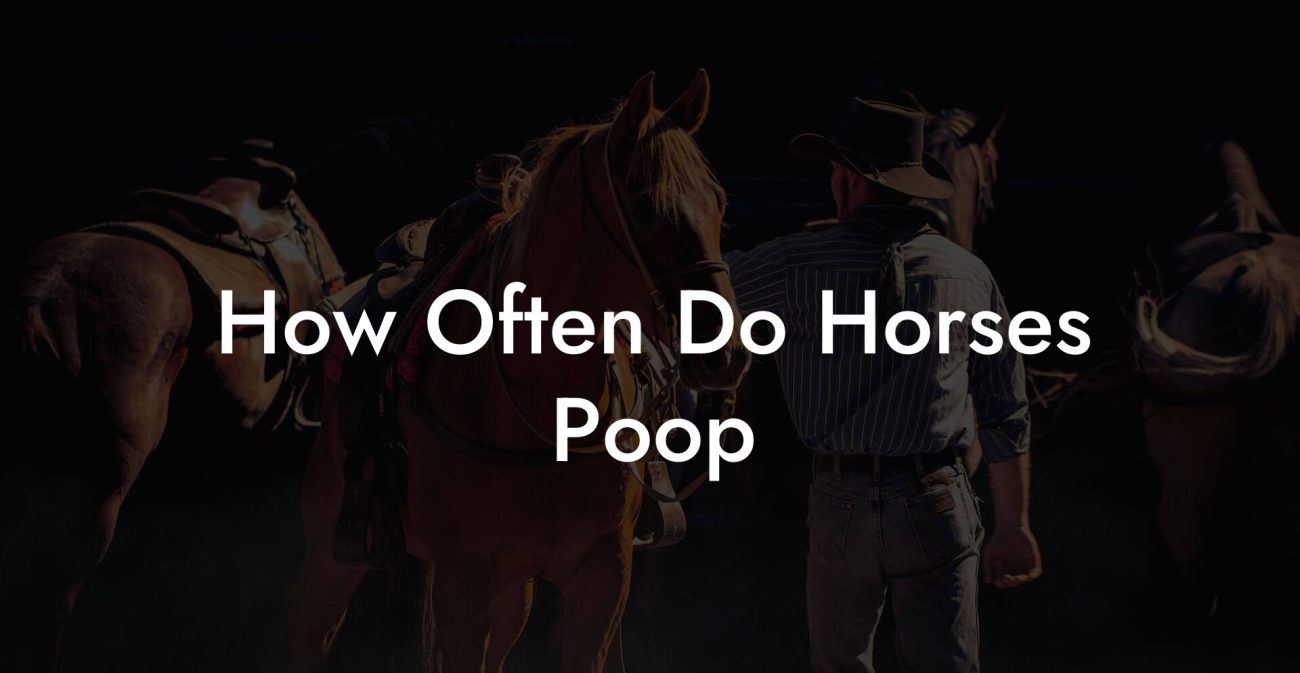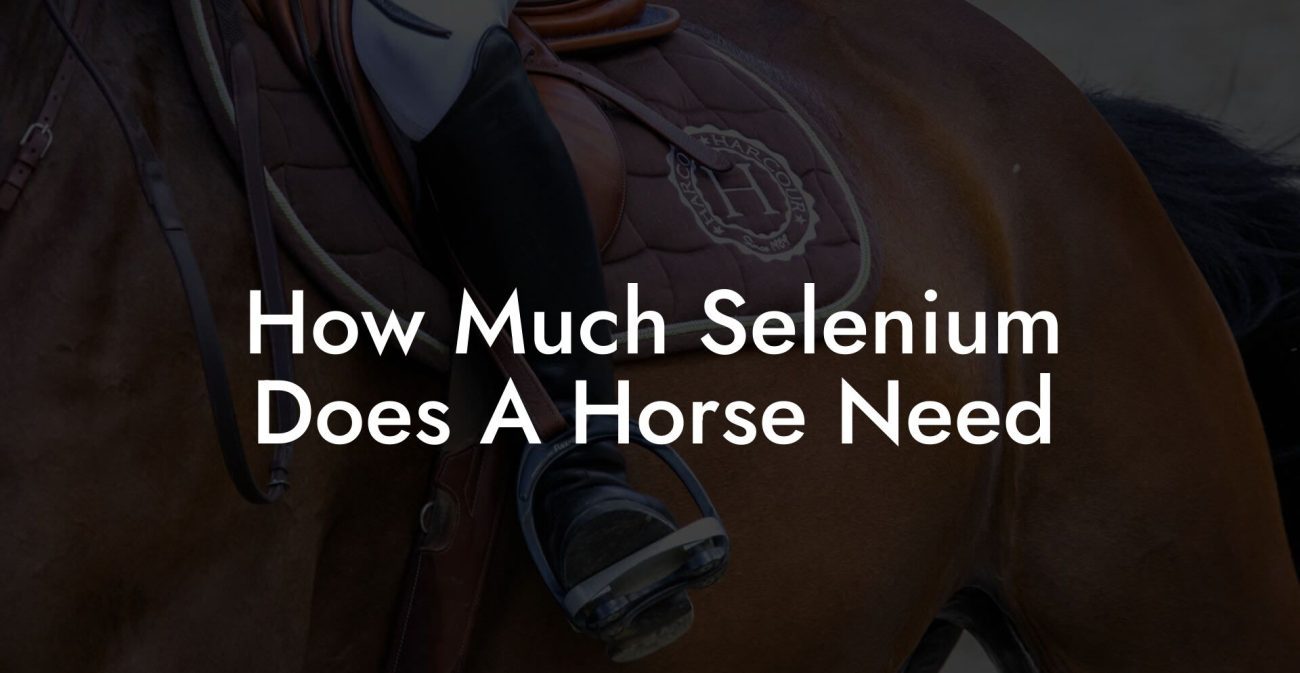Saddle up your curiosity and get ready to dive into the exhilarating world of horse care! Whether you’re a first-time owner, a daydreaming equestrian enthusiast, or just scrolling through looking for some cool insights into caring for a majestic creature, this guide is your ultimate roadmap. We’re here to demystify the art of horse care, break down practical tips with a generous dash of humor, and share insider advice that resonates with the vibrant, adventurous spirit of Gen-Z and millennial horse lovers.
Quick Links to Useful Sections
- Why Caring for a Horse is More Than Just Feeding and grooming
- Understanding the Basics: Getting to Know Your Equine Friend
- Horse Anatomy 101
- Deciphering Equine Behavior
- Setting Up Your First stable or Pasture
- Designing a Safe and Comfortable Living Space
- Smart Stable Management for the Modern Horse Owner
- Horse nutrition: Feeding Your Equine Companion Right
- The Fundamentals of Equine Diet
- Hydration: The Unsung Hero of Equine Health
- Grooming: Bonding Through Brushing and Beyond
- Essential Grooming Tools for Beginners
- Bathing and Skin Care
- Exercise and Mental Stimulation: Keeping Your Horse Fit and Happy
- Establishing a Daily Exercise Routine
- Mind Games and Enrichment Activities
- Tack and equipment: What Every Beginner Should Know
- Choosing the Right Saddle and Bridle
- Maintenance Tips for Your Equipment
- Safety Measures and Emergency Preparedness in Horse Care
- Daily Safety Practices
- Emergency Preparedness
- Common Pitfalls and How to Avoid Them
- Overfeeding and Nutrition Missteps
- Neglecting Regular Health Check-Ups
- Improper Training and Handling
- Skipping the Gear Maintenance Routine
- Resources and Community Support: Your Next Steps
- Join Online Forums and Social Media Groups
- Local Riding Clubs and Equine Workshops
- Consult with Professionals
- Books, Podcasts, and Blogs
- Real-Life Stories: Triumphs and Tumbles in Horse Care
- The Rookie Rider's Breakthrough
- From Fright to Friendship: A Stallion’s Tale
- The Community That Caught a Falling Horse
- Creating Your Personalized Horse Care Plan
- Step 1: Conduct a Holistic Assessment
- Step 2: Set Clear, Achievable Goals
- Step 3: Integrate a Variety of Strategies
- Step 4: Track Your Progress
- Step 5: Stay Open to Learning and Adapting
- HR-Approved FAQs: Your Horse Care Questions Answered
- Your Journey to Equine Mastery Begins Now
Why Caring for a Horse is More Than Just Feeding and grooming
Owning a horse isn’t just about stocking up on heaps of hay and glossy grooming tools. It’s an immersive experience that involves building a genuine relationship with your four-legged friend. When you care for a horse, you’re tapping into a world where compassion, responsibility, and the occasional muddy frenzy collide.
Beyond the basics, proper horse care means understanding your equine partner’s body language, health needs, and even their quirky personality traits. In today’s fast-paced digital era, blending traditional wisdom with modern techniques can elevate your horse care game to the next level. Think smart stables, social media-savvy barn managers, and eco-friendly feed strategies, all designed to help you thrive as a horse owner.
In essence, caring for a horse is about forming a bond that transcends words. It’s about mutual trust, shared adventures, and the undeniable magic of watching your companion gallop gracefully across sunlit meadows. And yes, it’s also about the incredible Instagram moments you’ll capture along the way.
Understanding the Basics: Getting to Know Your Equine Friend
Before you dive headfirst into the rewarding world of horse care, it’s important to familiarize yourself with the basics. Much like learning a new language, understanding horse behavior and needs can take a little time, but don’t worry, we’re here to guide you every hoof step of the way.
Horse Anatomy 101
A horse is a complex creature with a unique physiology that sets it apart from other farm animals. Familiarizing yourself with basic horse anatomy helps you recognize the signals your horse sends, whether it’s a subtle change in posture or a signature whinny.
Key points to know:
- Legs and Hooves: Essential for mobility. Regular hoof care is a must to prevent lameness and other issues.
- Mane and Tail: Not just for show, healthy hair is often a sign of a well-cared-for horse.
- Body Condition: Monitoring weight, muscle tone, and overall condition can give early hints about the horse’s health.
Understanding these basics lays the foundation for more advanced horse care practices.
Deciphering Equine Behavior
Horses communicate in myriad ways, from subtle ear twitches and eye glances to ground-shaking neighs. As a beginner, it's vital to invest time in observing your horse’s behavior. Recognize signs of agitation, relaxation, or excitement, and learn what your horse may be trying to tell you.
For instance, a horse that pins its ears back might be feeling threatened, while a relaxed posture usually indicates contentment. By tuning into these signals, you can foster a deeper and more trusting relationship with your equine partner.
Setting Up Your First stable or Pasture
One of the most thrilling, and perhaps daunting, parts of horse care is setting up a safe, comfortable space for your horse. Whether you’re renting a stall at a local barn or establishing your own mini equine haven, a functional and well-organized stable or pasture is essential.
Designing a Safe and Comfortable Living Space
Your horse’s environment should offer both protection from the elements and ample space for exercise. When planning your stable or pasture, keep these tips in mind:
- Ventilation and Lighting: Ensure there’s plenty of fresh air and natural light to create a healthy atmosphere.
- Cleanliness and Hygiene: Regular cleaning routines prevent the buildup of manure and bacteria, which is crucial for preventing disease.
- Space to Roam: Adequate pasture area not only keeps your horse physically fit but also mentally stimulated.
Remember, horses thrive in environments that mimic their natural settings as closely as possible. Incorporating green spaces, ample shade, and even a few playful obstacles can make a huge difference in your horse’s everyday happiness.
Smart Stable Management for the Modern Horse Owner
In today’s digital era, smart technology isn’t just for smartphones, it’s transforming how we manage stables, too. Consider exploring:
- Stable Management Apps: These apps help track feeding schedules, veterinary appointments, and even exercise routines.
- Automated Feeding Systems: They ensure your horse gets the right portions of hay and grain at the right times.
- Eco-Friendly Solutions: Solar-powered lighting and sustainable waste management practices not only save money but also contribute to a greener planet.
By integrating these modern solutions, you can simplify daily routines while maintaining a supportive, nurturing environment for your horse.
Horse nutrition: Feeding Your Equine Companion Right
Let’s talk food, because a happy horse is one that’s well-fed with the right balance of nutrients. Horse nutrition is an essential part of care, ensuring your horse stays energetic, agile, and healthy.
The Fundamentals of Equine Diet
A horse’s natural diet is primarily grass-based, but modern feeding practices may involve hay, grains, and specialized supplements. Here’s what you need to know:
- Forage First: Grass and hay are the cornerstone of your horse’s diet. Aim for high-quality, dust-free hay to avoid respiratory issues.
- Concentrates and Grains: These should be introduced gradually and are best reserved for horses with higher energy needs, like active performance horses.
- Supplements: Vitamins, minerals, and electrolytes may be needed to fill any nutritional gaps. Consult with a veterinarian to fine-tune your horse’s regimen.
Keeping a careful eye on your horse's weight and overall condition will help you adjust their diet as needed. Modern techniques include digital feed tracking apps and regular nutritional assessments to ensure optimum health.
Hydration: The Unsung Hero of Equine Health
Just like us, horses need to stay hydrated to function at their best. Accessible, clean water is a non-negotiable part of daily care. Be sure to check water sources frequently and consider temperature fluctuations, horses drink more when the weather is warm and might be less inclined during colder months.
Innovative water management solutions, like automatic waterers, can help maintain steady hydration while reducing your daily workload.
Grooming: Bonding Through Brushing and Beyond
Grooming transcends mere tidiness, it’s a crucial bonding ritual between you and your horse. From brushing to bathing, these routines are essential for both hygiene and emotional connection.
Essential Grooming Tools for Beginners
A well-stocked grooming kit is your best friend in the stable. Some must-have items include:
- Body Brushes: Use soft brushes to remove dust and loose hair without irritating your horse’s skin.
- Curry Combs: Ideal for loosening dirt and stimulating blood circulation.
- Mane and Tail Combs: These keep your horse looking sleek and manageable, especially during show season.
- Hoof Pick: Regular hoof picks help remove debris and prevent infections.
Establish a grooming routine that’s as much about relaxation as it is about upkeep. A calm, affectionate grooming session can ease stress for both you and your horse, reinforcing a mutual sense of trust.
Bathing and Skin Care
While horses generally require less frequent baths than dogs, they do need occasional washes to stay cool and clean. Use lukewarm water and horse-friendly shampoos to preserve natural oils on
the skin. After a bath, ensure your horse is dried properly to prevent chills. This not only boosts comfort but also minimizes the risk of skin irritations or infections.
Exercise and Mental Stimulation: Keeping Your Horse Fit and Happy
Just as you might hit the gym or stream a yoga session on a lazy Sunday, horses need regular exercise to maintain peak physical and mental health. From trotting around a pasture to engaging in fun trail rides, there’s a variety of activities that keep your four-legged friend fit, curious, and engaged.
Establishing a Daily Exercise Routine
For beginners, the goal is to gradually introduce exercise. Start with gentle activities like controlled walks or light trotting in a safe space. As your horse builds stamina, consider increasing intensity with cantering or even basic ground driving techniques.
Incorporate daily warm-ups and cool-downs for a balanced workout, much like how you’d approach your own fitness regimen. Watching your horse’s response to exercise can be both uplifting and fun, it’s like watching your favorite live-action series unfold in real time.
Mind Games and Enrichment Activities
Mental stimulation is just as essential as physical exercise. Horses are intelligent animals that enjoy puzzles and new experiences. Try these simple enrichment ideas:
- Treat Trails: Hide small treats around the pasture to encourage natural foraging behavior.
- Obstacle Courses: Set up safe, low obstacles to challenge your horse’s agility and problem-solving skills.
- Interactive Toys: Invest in durable balls or toys specifically designed for horses. These can prevent boredom and stimulate playful behavior.
All these activities work together to ensure that your horse doesn’t just exist, they thrive in an environment filled with physical challenges and mental intrigue.
Tack and equipment: What Every Beginner Should Know
From saddles and bridles to blankets and girths, the right gear can dramatically influence your horse care experience. Understanding the purpose and proper use of each piece of equipment is crucial, and while it might seem daunting at first, the process of mastering these essentials is both empowering and fun.
Choosing the Right Saddle and Bridle
The saddle is the bridge between you and your horse, so choosing one that fits well and is comfortable for both parties is paramount. Here are a few things to consider:
- Fit and Balance: A well-fitted saddle ensures that weight is distributed evenly across your horse’s back, preventing sores and discomfort.
- Style and Function: Different disciplines, from western riding to English riding, require different saddle styles. Know your riding goals to pick the right one for your needs.
- Bridle Basics: A quality bridle not only provides control but also enhances communication. Be sure to choose a bridle that complements your saddle and fits your horse’s head comfortably.
Spending time researching and test-riding various tack options is well worth the investment in the long run.
Maintenance Tips for Your Equipment
Just as you care for your horse, taking care of your tack ensures safety and longevity. Here are some essential maintenance tips:
- Regular Cleaning: Wipe down your tack after each ride to remove sweat, dirt, and dust. This practice prevents premature wear and tear.
- Storage Solutions: Store your equipment in a cool, dry place to preserve leather quality and maintain the integrity of synthetic materials.
- Professional Inspections: Periodically have a professional inspect your equipment. This not only helps catch potential issues early but also ensures you’re riding with gear that’s safe and comfortable for both you and your horse.
With proper care, your tack can last for many seasons, accompanying you and your horse on countless adventures.
Safety Measures and Emergency Preparedness in Horse Care
Safety isn’t just a buzzword, it’s the cornerstone of responsible horse care. Horses are powerful animals, and while their spirit brings joy, their strength demands respect. Being prepared for emergencies ensures that both you and your equine companion are protected.
Daily Safety Practices
Incorporate these everyday safety measures into your routine:
- Regular Health Checks: Keep an eye out for any signs of discomfort, unusual behavior, or physical injuries. When in doubt, consult your veterinarian as early as possible.
- Familiarize Yourself with Your Environment: Whether you’re in a barn or out in the pasture, know the layout, exits, and any potential hazards.
- Proper training for Handling: Learn and practice safe handling techniques. Even if you’re a first-timer, basic training can significantly reduce risks during interactions with your horse.
Emergency Preparedness
Emergencies can range from minor injuries to severe health events. Being proactive can make all the difference:
- First Aid Kit: Keep a comprehensive equine first aid kit handy. Include items such as bandages, antiseptic, and tools for dealing with minor lacerations or strains.
- Emergency Contacts: Maintain an accessible list of emergency numbers, including your vet, local farriers, and a trusted equine rescue service.
- Training and Drills: Consider taking a basic equine first aid course. Knowing what to do in an emergency not only boosts your confidence but ensures your horse gets the care they need promptly.
With sound safety protocols in place, you'll be equipped to handle unexpected challenges while keeping your horse happy and healthy.
Common Pitfalls and How to Avoid Them
Every new adventure comes with its learning curves, and horse care is no exception. As you begin your journey, being aware of common pitfalls can save you time, money, and stress.
Overfeeding and Nutrition Missteps
It’s easy to fall into the trap of overfeeding, especially if your horse loves snacking as much as you love a good meme. Overfeeding can lead to weight gain and health complications like laminitis. Stick to a balanced diet and consult with a nutrition expert to tailor a plan that fits your horse’s unique needs.
Neglecting Regular Health Check-Ups
Sometimes, in our busy lives, regular health check-ups might slip through the cracks. Routine vet visits, dental care, and farrier appointments are essential to spot issues early. Don’t wait until a small problem turns into a huge headache!
Improper Training and Handling
Overenthusiastic but inexperienced handling can sometimes lead to misunderstandings between you and your horse. Invest time in learning proper techniques from seasoned professionals or through certified courses. A little knowledge goes a long way in building a safe and trusting relationship.
Skipping the Gear Maintenance Routine
Ignoring tack care is like neglecting your favorite pair of sneakers, it just doesn’t work out well. Regular cleaning and proper storage of your tack are non-negotiable to ensure safety and longevity.
Resources and Community Support: Your Next Steps
Embarking on the journey of horse care is as exhilarating as it is challenging, but you’re never alone. There is a wealth of resources and supportive communities ready to help you at every step.
Join Online Forums and Social Media Groups
Platforms like Facebook, Reddit, and specialized equine forums are treasure troves of advice, shared experiences, and expert tips. Engaging with fellow horse enthusiasts can help you troubleshoot challenges and celebrate your successes.
Local Riding Clubs and Equine Workshops
Check out local stables and riding clubs, these communities often organize hands-on workshops, clinics, and social events. It’s a fantastic way to hone your skills, network with like-minded individuals, and sometimes even discover your next lifelong friend.
Consult with Professionals
Never underestimate the value of professional guidance. Your veterinarian, farrier, and experienced trainers are invaluable allies in your journey toward becoming a confident, compassionate horse owner. Schedule regular consultations to ensure your horse’s care plan is on point.
Books, Podcasts, and Blogs
In this digital age, there’s no shortage of reading material and tech-savvy solutions. Whether it’s a comprehensive book on equine care, a podcast featuring industry experts, or a blog detailing daily routines, stay curious and keep learning.
Every step you take, every question you ask, and every challenge you overcome adds to your growing expertise as a horse owner. Embrace the journey, share your experiences, and let your passion for horses shine through every interaction.
Real-Life Stories: Triumphs and Tumbles in Horse Care
The world of horse care is filled with stories of both success and lessons learned the hard way. Let’s take a look at a few anecdotes that showcase the highs and lows of caring for these magnificent creatures.
The Rookie Rider's Breakthrough
Emily, a self-proclaimed urban cowboy with zero prior experience, found herself in over her head when she adopted her first horse, Blaze. Initially overwhelmed by the demands of diet management, grooming routines, and handling equipment, Emily sought advice from an online community. With tips ranging from proper hoof care to tackling stubborn mane tangles, she slowly gained confidence. Today, Emily not only manages a thriving stable but also mentors other newbies, proving that passion and persistence can turn any stumbling block into a stepping stone.
From Fright to Friendship: A Stallion’s Tale
Jackson inherited a spirited stallion named Thunder, a horse with as much attitude as heart. Early encounters were fraught with tension and mishaps, but careful observation of Thunder’s body language and consistent, gentle handling eventually built a bridge of trust. With regular exercise, consistent training, and lots of patience, Thunder transformed from a skittish, unpredictable creature into a loyal partner on adventures. Jackson’s journey is a testament to the transformative power of empathy and proper care.
The Community That Caught a Falling Horse
When rookie owner Sam faced a sudden health scare with his beloved mare, a network of experienced riders rallied around him. From impromptu barn visits to sharing emergency first aid tips, the support was overwhelming. Sam’s story underlines the importance of community, when you’re on this journey, it’s comforting to know that help is just a message or call away.
These stories capture the rollercoaster ride of horse care: the inevitable challenges, the rewarding breakthroughs, and the shared moments of triumph that remind you why you fell in love with horses in the first place.
Creating Your Personalized Horse Care Plan
Just as no two horses are alike, no two care plans should be either. Customizing your approach is key to addressing the unique needs of both you and your equine companion.
Step 1: Conduct a Holistic Assessment
Start by evaluating your horse’s health, behavior, and environment. This includes a thorough check-up with your vet, a review of your current grooming and feeding routines, and an honest look at your stable or pasture conditions.
Step 2: Set Clear, Achievable Goals
Define what success looks like for you. Whether it’s achieving that perfect grooming session, mastering the art of balanced nutrition, or simply strengthening your bond, clear goals will keep you motivated and offer measurable benchmarks as you progress.
Step 3: Integrate a Variety of Strategies
Incorporate different modalities into your plan:
- Nutrition and Feeding: Tailor your horse’s diet based on expert recommendations and regular health assessments.
- Regular Exercise: Establish a routine that includes both physical exercise and mental enrichment activities.
- Grooming and Hygiene: Maintain a consistent schedule for brushing, bathing, and hoof care to keep your horse comfortable and healthy.
- Emergency Preparedness: Keep a well-stocked first aid kit and essential contacts handy for peace of mind.
- Professional Consultations: Regularly engage with vets, farriers, and experienced trainers to fine-tune your care strategy.
Step 4: Track Your Progress
Keep a journal or use digital tools to record daily routines, behavioral changes, and health updates. Over time, this record will help you adjust your plan for continuous improvement.
Step 5: Stay Open to Learning and Adapting
The world of horse care is ever-evolving. Embrace new technologies, emerging trends, and evolving techniques as you refine your approach. Adapting to change is part of the journey, and every challenge offers a learning opportunity.
A personalized horse care plan is not a one-size-fits-all solution, it’s a dynamic, evolving strategy that you tailor over time. With dedication, research, and a willingness to learn, you’ll develop a care routine perfectly suited to your horse’s unique needs.
HR-Approved FAQs: Your Horse Care Questions Answered
Here are some frequently asked questions to clear up the common uncertainties beginners face when caring for a horse:
1. How often should I groom my horse?
Regular grooming is key; most horse owners benefit from daily brushing to remove dust and debris, with more intensive grooming sessions (including bathing and mane/tail care) performed weekly or as needed.
2. What should I feed my horse?
A balanced diet that prioritizes high-quality forage (grass and hay) is essential. Depending on your horse’s activity level, age, and health, you might also need grains or supplements. Always consult a nutritionist or veterinarian for tailored advice.
3. How do I know if my horse is sick?
Common signs include changes in behavior, appetite loss, unusual lethargy, or visible physical issues such as swelling or lameness. Regular veterinary check-ups can help catch problems early.
4. What safety gear should I invest in?
Basics include a well-fitted saddle, quality bridle, grooming tools, and a comprehensive first aid kit. Additionally, consider smart stable equipment and proper storage solutions to maintain a safe environment.
5. How do I build a trusting relationship with my horse?
Consistency, patience, and gentle handling are key. Spend quality time on grooming, training, and even just quiet moments, and soon your horse will respond with trust and affection.
6. Can I manage horse care on my own, or do I need help?
While many aspects of horse care can be managed independently, don’t hesitate to seek help from professionals or supportive communities, especially when dealing with emergencies or complex issues.
7. What are common mistakes new horse owners make?
Common pitfalls include overfeeding, inconsistent exercise, neglecting regular vet visits, and improper tack maintenance. Educating yourself and seeking advice from experienced owners can go a long way.
8. How important is exercise for my horse?
Crucial! Exercise helps maintain physical fitness, muscle tone, and mental stimulation. A mix of controlled physical activity and enrichment games can significantly enhance your horse’s well-being.
9. How do I maintain a safe stable environment?
Regular cleaning, proper ventilation, secure fencing, and routine safety checks are essential. Adopt digital solutions and schedules to ensure nothing is overlooked.
10. Where can I find reliable resources for horse care?
Explore online equine communities, local riding clubs, and consult reputable books or expert blogs for in-depth advice. Engaging with professional trainers and veterinary services also ensures you’re equipped with the latest knowledge.
Your Journey to Equine Mastery Begins Now
Embracing the world of horse care is a commitment to understanding, patience, and continuous learning. As you navigate the challenges and triumphs of caring for a horse, remember that each day brings a new opportunity to deepen your bond and enhance your skills.
From the early morning grooming sessions to the sunset rides across open fields, every moment you spend with your horse is a step toward a more fulfilling, adventurous life. The tips, techniques, and insights shared in this guide are here to empower you, helping you build a stable environment that reflects care, creativity, and the spirit of modern horsemanship.
Let the rhythm of hooves guide you into a world where nature meets innovation, and heartfelt traditions blend seamlessly with futuristic smart stable solutions. Your journey is a unique story of passion, adventure, and continuous improvement, one that is best shared with a community that understands the magic of the equine connection.
So, dust off those riding boots, grab your grooming kit, and step confidently into the vibrant world of horse care. With every brushstroke, every nutritious meal, and every galloping adventure, you’re not just caring for a horse, you’re forging an unbreakable bond built on trust, respect, and endless enthusiasm.
Embrace your inner equestrian, stay curious, and remember: every great journey begins with a single, confident step.

